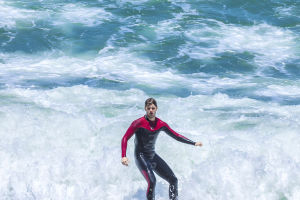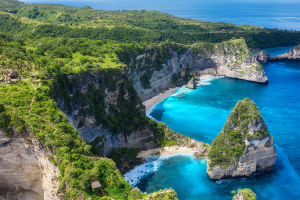With its historic cathedrals period buildings and its winding paths, Valencia is a European city.
Just a short ride away from the city center on a vintage tram will reveal a unique landscape. This is the new city, the Ciudad de las Artes y las ciencias.
It is an ultra-modern city built in 1991 under a new development plan and designed by the talented Valencian architect Santiago Calatrava.
The city is home to the Lena Sofia Art Palace, a science museum, a maritime museum, and a concert venue, as well as cultural, educational, research, and academic spaces such as the International Convention Center and the cinema, each of which has a distinctive style.
Admiring these buildings, we can appreciate the unlimited imagination of the architects.
Santiago Calatrava's architectural designs often draw inspiration from people, animals, and nature, and interpret them in their unique way.
Among the various peculiar buildings, there is one that stands out the most.
The building, which looks like a dinosaur skeleton, stands silently on the water and is the Prince Felipe Science Museum, which combines the Valencian people's unbridled passion and determination for science and technology, the cutting edge of the future.
The Prince Philip's Science Museum of Valencia is a marvelous building shaped like a white spaceship built in water, with an unforgettable skeleton-like architecture.
The museum was built to welcome the millennium and was opened in 2000.
The museum, which has three floors in total, presents different scientific and technological knowledge in various fields.
The exhibits here can of course not only be seen with the eyes but also touched and experienced with the hands, reflecting the principles of science and technology and their impact on mankind through the interaction between the exhibits and the visitors.
The Human Body Museum introduces the secrets of the human body and focuses on the latest science and technology for the treatment of human diseases.
Through the large screen, children can perform hands-on surgeries performed on wax figures simulated as patients, while learning about the role and use of various medical devices.
The flight hall recreates the historical process of human beings realizing the dream of flying. the first Spanish airplane in September 1909 is also preserved here.
On the third floor, the Cosmic Exploration Hall is a place where visitors can get curious about the vastness of the universe through a variety of exhibits, and where they can sit in the special seats used by astronauts during their training.
The museum also has "special exhibitions" designed for different periods.
The special exhibits range from experiential exhibits for able-bodied people to experience the inconvenience of living with a disability to various thematic activities that allow visitors to think about their relationship with others and society.
Combining science with culture and art, Prince Felipe Science Museum offers a different kind of experience of Valencia!


